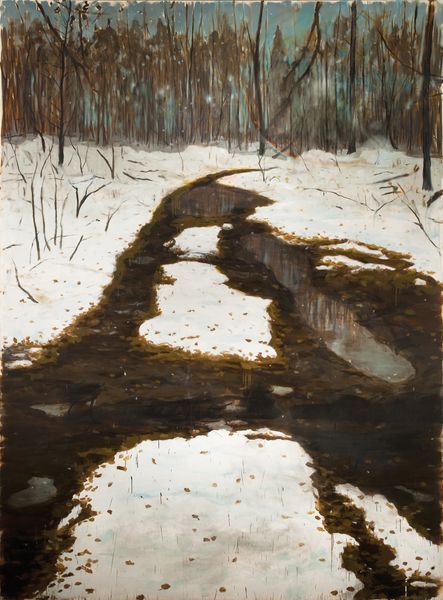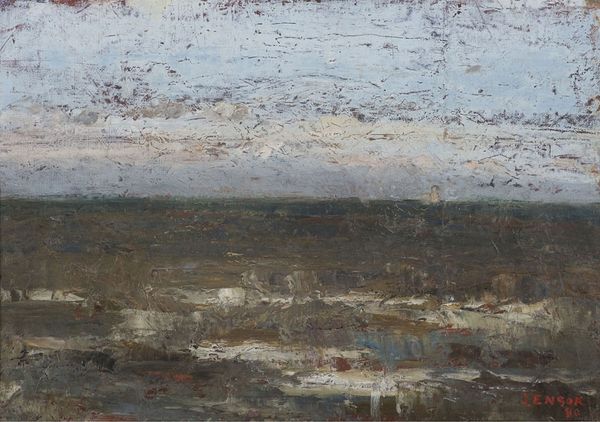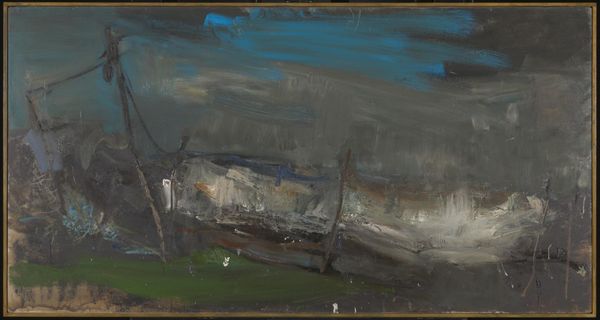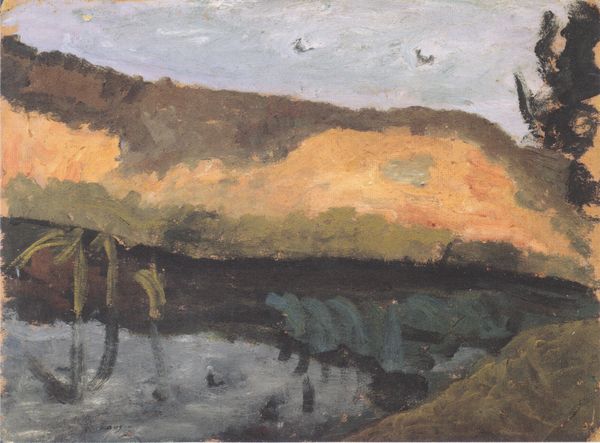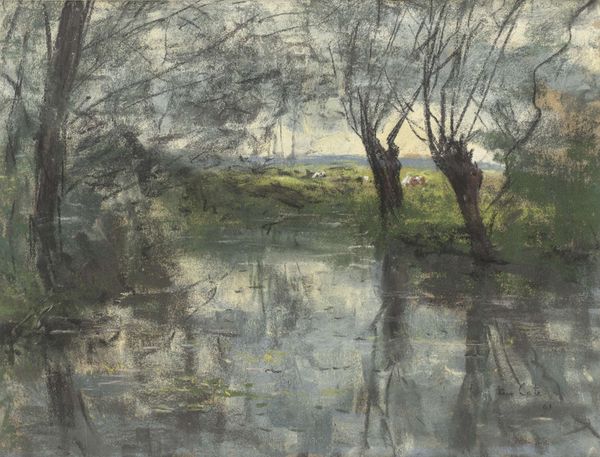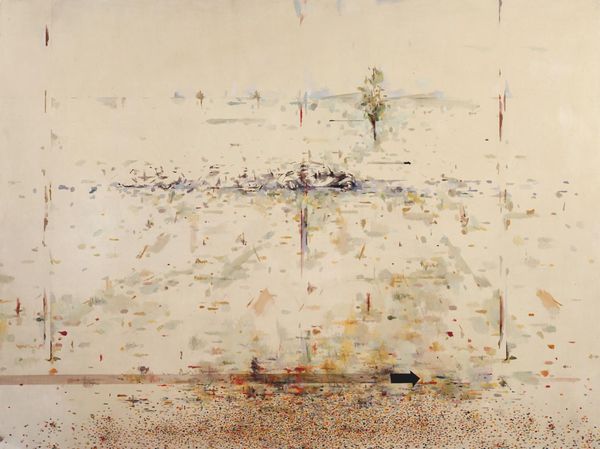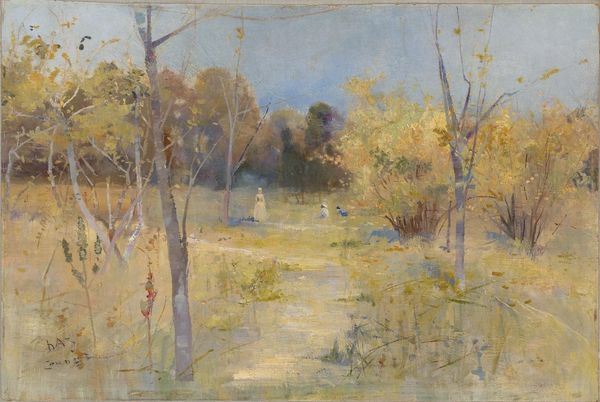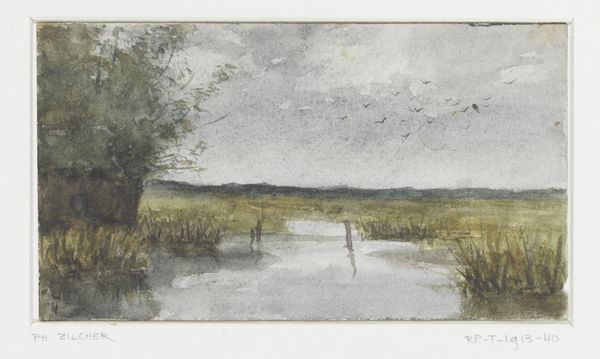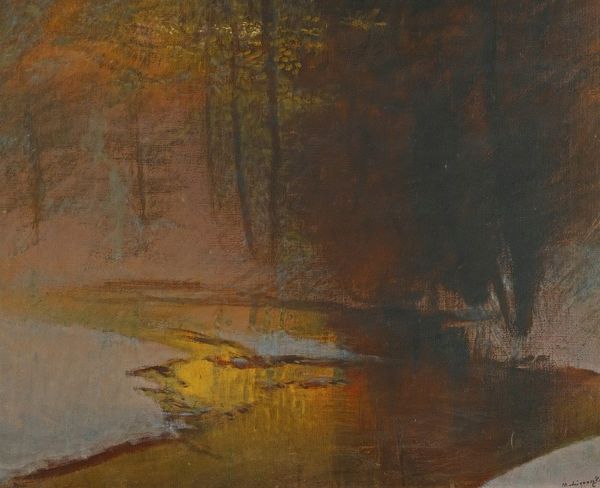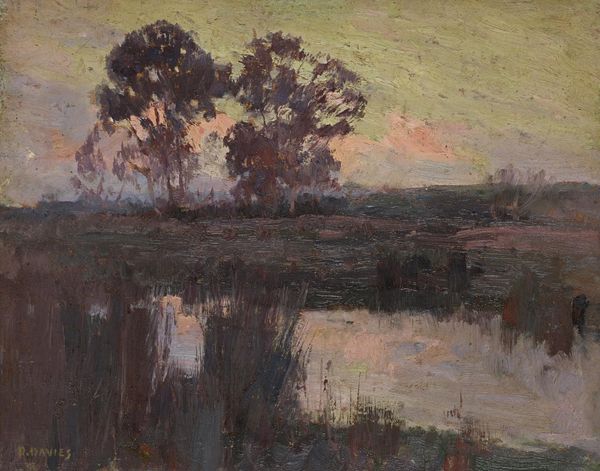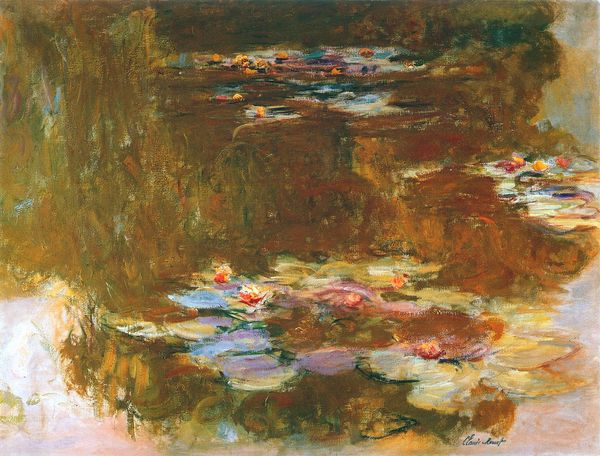
Dimensions: support: 2305 x 3605 x 50 mm
Copyright: © Peter Doig | CC-BY-NC-ND 4.0 DEED, Photo: Tate
Curator: Peter Doig, born in 1959, created this large-scale painting called "Echo Lake." Editor: The muted palette and hazy reflections immediately evoke a sense of isolation. It's almost dreamlike. Curator: Indeed. The lone figure standing at the water's edge feels almost like a ghostly apparition. Notice how Doig plays with the symbolism of reflection. The lake acts as a mirror, but the reflected image is distorted. Editor: The distortions are key. They disrupt the surface, preventing any clear reading of the image. The paint application itself – thick impasto in places, thinned washes in others – contributes to that ambiguity. Curator: Absolutely. The reflection motif is universal, inviting introspection and the contemplation of self. This mirror stage, if you will, hints at identity formation or, perhaps, its dissolution. The figure appears headless, which may suggest an ego death. Editor: The artist uses color to amplify the effect of that alienation, though. Note the tonal shifts between the shadowy foreground and the lighter, more diffuse background. The composition itself underscores a sense of unresolved tension. Curator: I leave feeling like the lake is a portal to the subconscious. Editor: I agree. The materiality underscores the painting's conceptual complexity.
Comments
Join the conversation
Join millions of artists and users on Artera today and experience the ultimate creative platform.
tatebritain 7 months ago
⋮
Echo Lake is a large, dark painting of a scene at night. Like many of Doig’s paintings of the late 1990s, it is landscape in format, with a composition based on horizontal bands of colour overlaid with detail. The painting is bisected by a line of white representing the shore of a lake. Above it is a band of earth and scrubby vegetation painted in white and pastel colours. This area is illuminated by the headlamps of an American-style police car located at the centre-right of the image. The bright lights on the car’s roof are roughly level with the top of the vegetation. Above this point, filling the top third of the painting, is an area of purplish black. A few twinkling lights suggest distant habitations. On the right side of the painting, the trunks of trees growing above the shoreline are partially illuminated. Their branches extend up into the darkness. They are compositionally balanced by a telegraph pole on the left side of the painting at the level of the road on which the police car is parked. A man wearing black trousers, a white shirt and a narrow black tie (presumably a policeman) stands at the lakeshore looking out of the painting towards the viewer. His hands encircle his face and his mouth is an o-shape indicating that he is shouting out into the dark lake. The title suggests that nothing comes back to him but his own voice. The bottom half of the painting represents a blurry mirror image of the landscape above the shoreline. This mirrored reflection provides the visual version of an echo.
